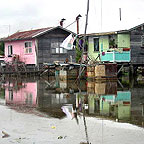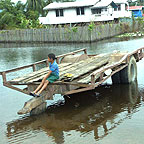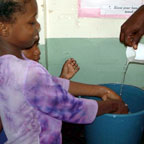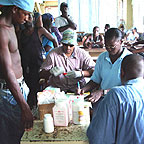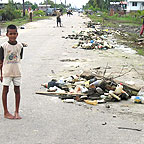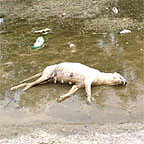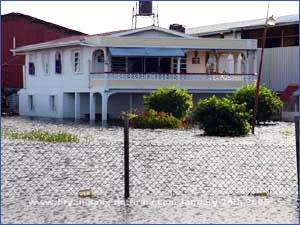 By mid-January, 27 inches of rain had already fallen in Guyana (normal rainfall for this period is 7 inches). This caused considerable flooding along the coastal regions which are the most densely populated areas of the country. At least 192,000 people in and around Georgetown, East Coast, East Bank and West Demerara have been affected.
By mid-January, 27 inches of rain had already fallen in Guyana (normal rainfall for this period is 7 inches). This caused considerable flooding along the coastal regions which are the most densely populated areas of the country. At least 192,000 people in and around Georgetown, East Coast, East Bank and West Demerara have been affected.
The floods had an impact on the health facilities and surveys conducted by PAHO/WHO revealed that in Region 3, 25% of the 12 health centers are closed and have some damage. Region 4 (population of 75,000) is the most critically affected, where 22 of the 36 health centers (61%) were flooded, 12 health care facilities (33%) are out of service, and three (8%) have limited functional capacity (the remaining seven are fully functioning). Damage reported includes loss of supplies (needles, drugs, vaccines, cotton, bandage, etc.) and damage to water pumps, refrigeration units (cold chain), furniture and electrical wiring.
PAHO organized and guided mobile health teams, visiting shelters and communities in the affected areas. Daily, about 35 health teams composed of 7-10 persons were deployed to conduct epidemiological surveillance and treat diseases. PAHO/WHO prepared and disseminated epidemiological surveillance forms, trained personnel in epidemiological and disease surveillance in shelters and communities, conducted data analysis and coordinated outbreak response, in collaboration with the Ministry of Health.
A basic protocol was developed to deal with suspected cases of leptospirosis, a bacterial disease usually caused by exposure to water contaminated with the urine of infected animals. Humans become infected through contact with water, food, or soil. The protocol recommends testing patients who are admitted to hospitals and randomly testing those who seek treatment for symptoms consistent with signs of leptospirosis. Mobile teams are collecting blood samples from areas where leptospirosis has not yet been detected. Complete information at www. paho.org/disasters.
|
|
|
Thanks to a communication campaign advising against unnecessary contact with flood waters, PAHO field staff noted a marked decrease in the number of children actually playing in the water. However, many people still waded barefoot through the water, increasing the risk of contact with the leptospirosis bacteria through open wounds or cuts on their feet. |
|
|
|
Mobile medical teams visit shelters on a regular basis to track illnesses and disease. Serious cases are referred to the hospital. As of 8 February, 2,400 people were still in shelters. |
|
|
|
Sanitary conditions deteriorated quickly as a result of the floods. Garbage removal was a problem in the affected areas (compounded by the fact that shelters served meals in styrofoam containers). Rotting animal carcasses littered the roadsides and had to be disposed of. |

